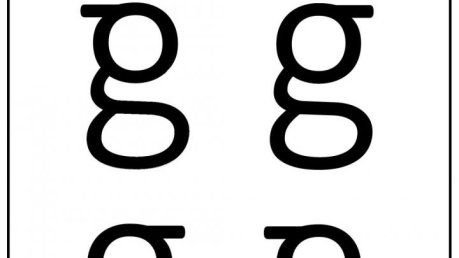Few people can write this letter of the alphabet correctly
It shouldn’t be complicated: write out a lower-case, print letter “g.” But if someone asked you to do this, would you be able to? You might think so, but you also might be wrong.
A recent study that’s been making the rounds on the internet reveals that while the majority of people can recognize this letter and read it, most can’t draw it, despite seeing it constantly. The findings, published in the Journal of Experimental Psychology: Human Perception and Performance, shed light on how our brains work when it comes to learning—or not learning, in this case.
Our alphabet has 26 letters, yet the lower-case “g” is the only one that gives people a hard time. The lower-case “g” comes in two forms: the fish hook, which we’re all familiar with, and the loop-tail version, which has two closed circles with a rightward-facing hook connecting the two. This loop-tail version is everywhere: in books, newspapers, emails and more. So why can’t people remember how to draw it?
A group of researchers in the Department of Cognitive Science at Johns Hopkins University decided to figure this oddity out. First, they determined that out of 100 books, 97 percent of adult fiction and nonfiction, 74 percent of children’s picture books and 89 percent of children’s chapter books use the loop-tail “g.” So it is, indeed, everywhere. The researchers then did three different experiments.
In experiment number one, 38 adults were asked to identify letters that had two different lower-case forms in print. Only two responded “g” and only one could actually draw it out. The next experiment required 16 people to read a paragraph to themselves; however, if they came across a word with a “g,” they needed to say it aloud. After reading the paragraph, which had fourteen g-words, all using loop-tails, the participants were asked to draw the “g” they had seen. Only one person who tried to draw the loop-tail did so correctly.
For the last experiment, 25 participants had to pick the correct version of the loop-tail “g” out of four variations. 56 percent chose a version in which the entire lower half was backward. Only 28 percent picked the right one.
“We think that if we look at something enough, especially if we have to pay attention to its shape as we do during reading, then we would know what it looks like, but our results suggest that’s not always the case,” said Johns Hopkins cognitive scientist Michael McCloskey, the senior author.
The researchers believe that this phenomenon might be happening because the loop-tail “g” isn’t something we’re typically taught how to write in school. This would explain why we can’t write the “g.” But why is it that we can’t even distinguish a correctly drawn one? Researchers think it might have to do with how we process data.
“What about children who are just learning to read? Do they have a little bit more trouble with this form of g because they haven’t been forced to pay attention to it and write it?” McCloskey said. “That’s something we don’t really know. Our findings give us an intriguing way of looking at questions about the importance of writing for reading.”
Another similar dual-version lowercase letter is the “a.” But we don’t have nearly the same type of problem recreating the two-story version versus the one-story version. Could it be that the loop-tail “g” is just harder to write and therefore more difficult to remember? Can you write the loop-tail “g”?
[h/t: Science Daily]








